Primary Kepler-47A Luminosity 0.01 L☉ Semimajor axis 8 cm Apparent magnitude (V) 15.8 | Companion Kepler-47B | |
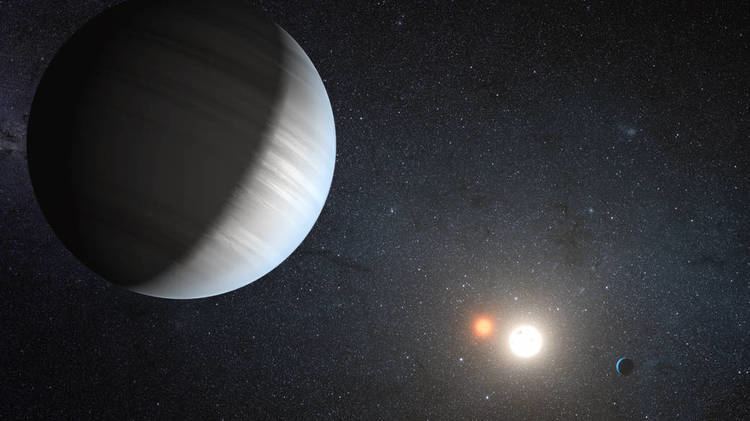 | ||
Similar Kepler‑16, Kepler‑42, Kepler‑36, Kepler‑33, Kepler‑56 | ||
Kepler 47 a journey from the solar system to an exoplanet
Kepler-47 is a binary star system with at least three planets in orbit around the pair of stars located about 5,000 light-years away from Earth. The first two planets announced are designated Kepler-47b, and Kepler-47c. Kepler-47 is the first circumbinary multi-planet system discovered by the Kepler mission. The outermost of the planets is a gas giant orbiting within the habitable zone of the stars. Because most stars are binary, the discovery that multi-planet systems can form in such a system impacts theories of planetary formation.
Contents
- Kepler 47 a journey from the solar system to an exoplanet
- Kepler 47 decubrimiento sistema solar solar system discovery igeo tv
- Nomenclature and history
- Stellar characteristics
- Planetary system
- References

A group of scientists from NASA and Tel-Aviv University in Israel discovered the system via NASA's Kepler space observatory in 2012. In November 2013, confirmation of a third planet, Kepler-47d was announced, with a shorter orbit than c.
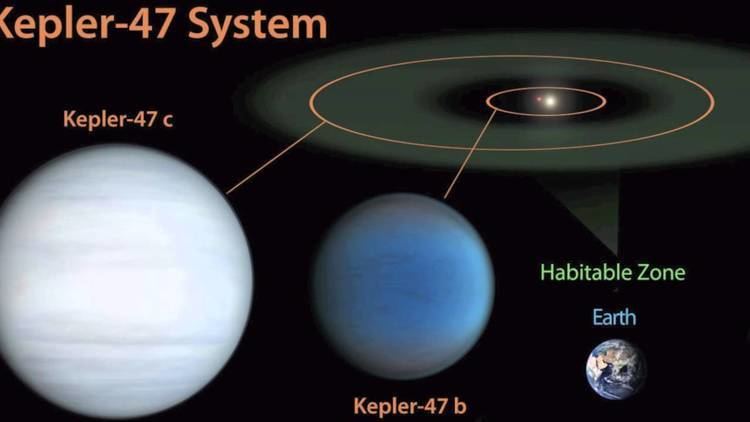
Kepler 47 decubrimiento sistema solar solar system discovery igeo tv
Nomenclature and history
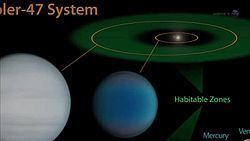
Prior to Kepler observation, Kepler-47 had the 2MASS catalogue number 2MASS J19411149+4655136. In the Kepler Input Catalog it has the designation of KIC 10020423, and when it was found to have transiting planet candidates it was given the Kepler object of interest number of KOI-3154.
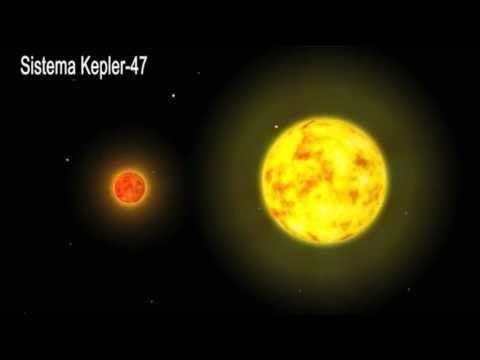
Planetary candidates were detected around the star by NASA's Kepler Mission, a mission tasked with discovering planets in transit around their stars. The transit method that Kepler uses involves detecting dips in brightness in stars. These dips in brightness can be interpreted as planets whose orbits pass in front of their stars from the perspective of Earth, although other phenomenon can also be responsible which is why the term planetary candidate is used.
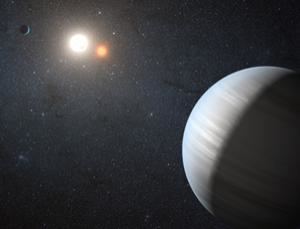
Following the acceptance of the discovery paper, the Kepler team provided an additional moniker for the system of "Kepler-47". The discoverers referred to the star as Kepler-47, which is the normal procedure for naming the exoplanets discovered by the spacecraft. Hence, this is the name used by the public to refer to the star and its planet.

Candidate planets that are associated with stars studied by the Kepler Mission are assigned the designations ".01", ".02", ".03" etc. after the star's name, in the order of discovery. If planet candidates are detected simultaneously, then the ordering follows the order of orbital periods from shortest to longest. Following these rules, there was two candidate planets detected, with orbital periods of 49.51 and 303.158 days.
The designation b, c and d derive from the order of discovery. The designation of b is given to the first planet orbiting a given star, and d to the farthest. In the case of Kepler-47, there was initially two detected, so the letters b and c are used. When a third planet was confirmed, it was given the letter d.
Stellar characteristics
Kepler-47 is a binary star system composed of a G-type main sequence star (Kepler-47A) and a red dwarf star (Kepler-47B). The stars orbit each other about every 7.45 days. The stars have 104% and 35% of the Sun's mass, and 96% and 35% of the Sun's radius, respectively. They have temperatures of 5636 K and 3357 K. Based on the stellar characteristics and orbital dynamics, an estimated age of 4–5 billion years for the system is possible. In comparison, the Sun is about 4.6 billion years old and has a temperature of 5778 K.
The primary star is somewhat metal-poor, with a metallicity ([Fe/H]) of about –0.25, or about 56% of the amount of iron and other heavier metals found in the Sun. Both of the stars' luminosities are typical for their kind, with a luminosities of around 84% and 1% of that of the solar luminosity, respectively.
The apparent magnitude of the system, or how bright it appears from Earth's perspective, is about 15.8. Therefore, it is too dim to be seen with the naked eye.
Planetary system
The binary system is known to host three planets, all larger than Earth with no solid surface. The innermost planet, Kepler-47b, is a gas giant and resides close to its parent stars and therefore is inhospitable to life. It is thought to be smaller than Kepler-47c and is roughly three times the radius of Earth. The second planet, Kepler-47c, is also a gas giant and the outermost planet. It is situated within the habitable zone and its radius is 4 times the Earth's. Although it is assumed Kepler-47c is not capable of harboring life, it is marginally larger than Neptune and could possibly have a dense atmosphere of water vapor. The latest exoplanet to be discovered in the system was Kepler-47d, announced as being discovered in November 2013. This planet is about the size of planet "c", but orbits farther in then c does. It completes an orbit every 187.3 days.
